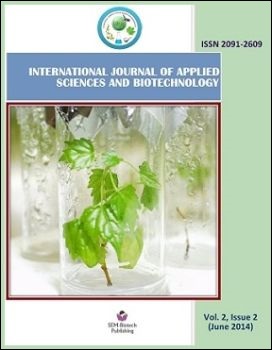Virtual Screening and Molecular Docking Study of Bloom’s Syndrome Protein (BLM) for Finding Potential Lead Drug Candidate
DOI:
https://doi.org/10.3126/ijasbt.v2i2.10086Keywords:
BLM HRDC domain, DHJ, G-Quadruplex Ligand, RecQ helicase, scoring.Abstract
Increased levels of locus-specific mutations within the BLM result in development of Bloom Syndrome and patients are found to be immune deficient. HRDC domain amino acid Lys1270 is presumably to play role in mediating interactions with DNA. Single point mutation of Lys1270 (K1270V) reduces the potency of Double Holliday junction (DHJ) DNA unwinding so BLM lead to its functional loss. Quadruplex formation have role in immunoglobulin heavy chain switching and inhibiting RecQ helicases activity in-vitro in BLM. Variety of G-Quadruplex ligands are employed by molecular docking for arriving at lead compound identification. The scoring function of docking results describes protein-ligand interaction and it conjointly instructed that docking of ligand at mutational binding site shows some repressing function to make potential lead drug molecule. So as to know the elaborated purposeful functional mechanism of protein and to relate impact of mutation with function and activity; dock screening, hit identification and lead optimization facilitate in design of lead drug compound.
DOI: http://dx.doi.org/10.3126/ijasbt.v2i2.10086
Int J Appl Sci Biotechnol, Vol. 2(2): 152-159




